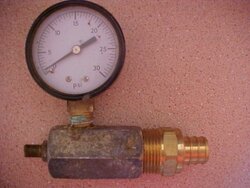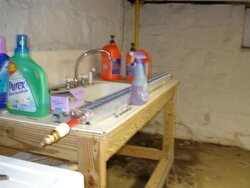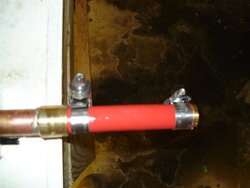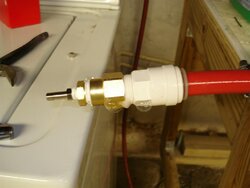in hot water said:
For soldering, clean every fitting and the end of the tube, even if it is new.
Just quoting this again.
Clean.
Every.
Fitting.
And.
Pipe.
It doesn't matter how shiny and new it is. Clean it. Use a good brush, and emory cloth (the open mesh stuff) or the scotch pad that hr mentioned. Don't use sandpaper (the copper filings will clog it, and then it will just smear the oils/waxes/etc. on the pipe around, instead of actually removing them).
Use a torch sized appropriately to the job. Any of the major torch manufacturers should list what size pipe each torch is designed for. A torch matched to the job makes it much easier.
Don't try to solder when there is water in the pipe. Find out where the water is coming from, and isolate it. I have a Lenox AA900 (1/2" air-acetylene swirl) tip that I use to solder when isolating the trickle of water is not possible. That's rated to braze copper pipe up to two inches. It has all it can do to solder 3/4" when there is water trickling through it - boiling water while simultaneously heating the pipe to 700+ degrees takes a
lot of btu's. Don't try to solder pipe with a normal torch if there is even a trickle of water - it's most likely just going to leak.
The core of the flame is the hot part. That's the part you use, not the "halo" around it. The idea is to heat the pipe up as quickly as possible, get it soldered, and get the heat away. Heating it slowly will burn away the flux before the pipe gets hot enough to solder.
Do not heat closed ball valves that have water in them. In other words, if you turn off a ball valve in a full pipe, there is water trapped in the core of the ball. Use high heat to solder and get done as quickly as possible, because valves can quite literally explode if the water turns to super-heated steam while trapped in the ball. I've pulled the shrapnel out of a co-worker's face as a result of that. This goes back to using the right torch for the job.
And, by the way, clean every fitting and every piece of pipe. Even if they are new.
Joe


 by releasing air and not worrying about getting every drop of water out, especially with level baseboard.
by releasing air and not worrying about getting every drop of water out, especially with level baseboard.



